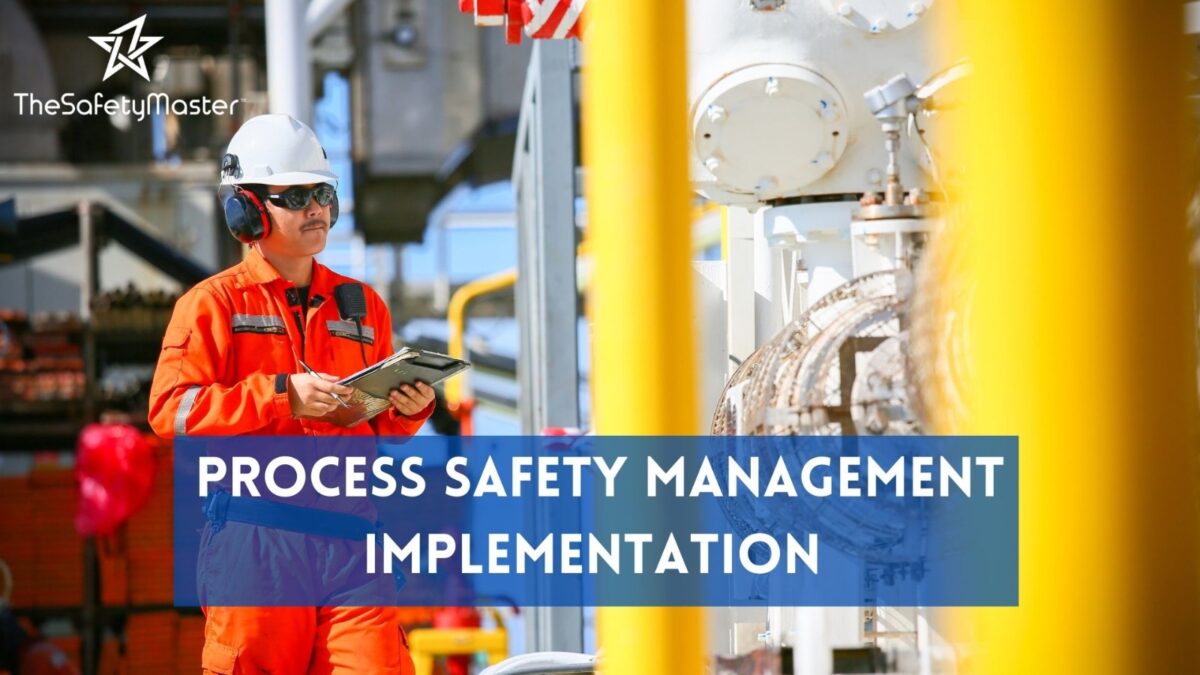Fire Load Calculation: Key Factors to Consider for Optimal Safety in Indian Industrial Settings

Unlocking the Key to Occupational Safety: The Role of Comprehensive Safety Audits in Indian Industrial Landscape
May 26, 2025
Importance of HAZOP for Multiple Industries
June 2, 2025In this article, we delve into the critical aspects that need careful consideration when it comes to fire load calculation in Indian industrial settings. With a focus on optimal safety, we shed light on key factors that can make all the difference in preventing catastrophic fire incidents. From understanding the types of materials involved to evaluating their combustible nature, we explore the essential elements to ensure a comprehensive fire load assessment. Join us as we uncover valuable insights and provide practical tips to fortify your fire safety strategy. Prepare to equip yourself with the knowledge you need for a safer industrial environment.
Introduction
The threat of fire is a grave concern for any industrial setting, and in India, where industrial activities are diverse and widespread, the need for comprehensive safety measures is paramount. This article explores the critical concept of fire load calculation and its significance in ensuring optimal safety within Indian industrial environments. Within these pages, we will delve into key factors that must be considered when calculating fire loads, such as material combustibility, heat release rates, fuel load and density, as well as ventilation and airflow. Additionally, we will explore the importance of implementing effective fire suppression systems, as well as the role of training and education in promoting fire safety. By understanding these crucial elements, industrial establishments can better protect their personnel and assets from potential disasters
Understanding Fire Load Calculation
Understanding Fire Load Calculation: Fire load calculation is a critical aspect of fire safety in Indian industrial settings. It involves determining the potential fuel and heat release rate within a given space, allowing for appropriate fire prevention and suppression measures. This calculation is essential to ensure optimal safety in industrial environments where the risk of fire is heightened.
To understand fire load calculation, one must grasp the concept of fire load itself. Fire load refers to the amount of combustible material present within a specific area or compartment. This includes everything from flammable liquids and gases to solid materials such as wood, paper, and textiles that can contribute to fire spread and intensity.
By accurately assessing the fire load, experts can then calculate the amount of energy that would be released if all combustible materials were ignited simultaneously. This information helps determine the necessary provisions for effective fire suppression systems, including sprinklers or extinguishing agents tailored to counteract potential fires.
An optimistic perspective on understanding fire load calculation lies in its potential to save lives and protect valuable assets. By comprehending the intricacies of this calculation process, we empower ourselves with knowledge that can significantly reduce risks associated with industrial fires. Through meticulous evaluation of combustibility factors and heat release rates, we pave the way for safer working environments where employees can thrive without fear of devastating fires.
Importance of Fire Load Calculation in Indian Industrial Settings
Importance of Fire Load Calculation in Indian Industrial Settings: Fire incidents can have catastrophic consequences in industrial settings, ranging from loss of life and property to severe economic setbacks. Therefore, the importance of accurately calculating fire loads cannot be overstated. In India, where industries play a significant role in the country’s economic growth, ensuring optimal safety measures is paramount.
By conducting fire load calculations, industries can gain valuable insights into the potential risks posed by combustible materials within their facilities. This enables them to develop effective strategies for fire prevention, suppression, and evacuation procedures. Moreover, these calculations aid in determining the most suitable fire protection systems and equipment to minimize damage and enhance response time during emergencies.
The implementation of proper fire load calculation practices also fosters a culture of safety within Indian industrial settings. By prioritizing proactive measures such as regular inspections and maintenance, training programs for employees on fire safety protocols, and investing in advanced firefighting technologies—industries demonstrate their commitment towards safeguarding not only their operations but also the well-being of their workforce.
Ultimately, adopting meticulous fire load calculation methods not only ensures compliance with safety regulations but also contributes to a positive environment conducive to sustainable growth and prosperity for businesses operating in Indian industrial sectors.
Key Factors to Consider for Fire Load Calculation
An essential aspect of fire load calculation is the assessment of material combustibility. Different materials have varying degrees of flammability, and understanding their properties is crucial for accurate calculations. Factors such as flashpoint, ignition temperature, and heat of combustion must be meticulously analysed. By doing so, industrial settings in India can identify potential fire hazards and take appropriate measures to mitigate risks effectively.
Evaluating Heat Release Rate:
The heat release rate (HRR) plays a significant role in fire load calculations as it determines the intensity and spread of a fire. Measuring HRR accurately ensures that safety systems are designed to handle worst-case scenarios effectively. By identifying materials with high HRR, industries can implement stringent safety measures like improved ventilation systems or automatic fire suppression mechanisms, thereby creating a safer working environment for employees.
Assessing Fuel Load and Density:
Another vital factor when considering fire load calculation is the evaluation of fuel load and density within an industrial setting. This involves analysing the quantity and arrangement of combustible materials present in a given area. By understanding the fuel load and density, safety protocols can be established to prevent hazardous situations from escalating into catastrophic incidents. Proper storage techniques, material segregation, and regular cleaning protocols contribute to reducing fuel loads, ultimately enhancing overall safety standards.
Factoring in Ventilation and Airflow:
Ventilation systems are critical components in industrial settings as they help control air quality by regulating temperature, humidity levels, and removing contaminants from workspaces. While ensuring optimal ventilation is important for human health purposes, it also plays an instrumental role in fire load calculation
Determining Material Combustibility
Determining Material Combustibility: The combustibility of materials plays a crucial role in fire load calculation, as it directly affects the potential for ignition and fire spread within industrial settings. Different materials possess varying levels of flammability, which must be carefully assessed to ensure optimal safety measures are in place. In Indian industrial settings, where a wide range of materials are used for production and storage, understanding material combustibility becomes even more significant.
When evaluating material combustibility, factors such as flashpoint, ignition temperature, and heat of combustion come into play. Flashpoint refers to the lowest temperature at which a material can generate enough vapour to ignite when exposed to an ignition source. Ignition temperature signifies the minimum temperature required to initiate combustion without an external ignition source. Heat of combustion represents the energy released during the complete burning of a given material.
It is essential to consider not only individual materials but also their potential interactions within an industrial facility. Some materials may have synergistic effects when combined with others, increasing their overall combustibility. By conducting thorough assessments and categorizing materials based on their combustibility characteristics, appropriate fire prevention measures can be implemented effectively, ensuring optimal safety standards are maintained in Indian industrial settings.
Evaluating Heat Release Rate
Evaluating Heat Release Rate: When it comes to fire safety in Indian industrial settings, evaluating the heat release rate of materials is a crucial factor. The heat release rate refers to the amount of energy released by a material as it burns, and it plays a significant role in determining the intensity of a fire. By understanding the heat release rate, professionals can adequately assess the potential danger and implement appropriate fire prevention measures.
One thought-provoking aspect to consider is how advancements in technology have allowed for more accurate evaluation of heat release rates. With sophisticated instruments and testing methods, researchers can precisely measure this critical parameter, enabling industries to make informed decisions regarding material selection and firefighting strategies. By staying up-to-date with these developments, Indian industrial settings can ensure optimal safety for their workers and minimize potential losses caused by fires.
An optimistic spin on this topic lies in recognizing that every small improvement in evaluating heat release rates contributes to creating safer environments. Each step forward brings us closer to mitigating fire hazards effectively. By embracing these advancements and implementing them into existing fire safety protocols, Indian industries can enhance their overall resilience while fostering a sense of security among their employees.
Assessing Fuel Load and Density
Assessing Fuel Load and Density: In order to accurately calculate fire load, it is crucial to assess the fuel load and density within an industrial setting. The fuel load refers to the total quantity of combustible materials present in a specific area, including both solid and liquid substances. These materials can range from flammable liquids stored in drums to piles of wooden pallets waiting to be used.
Density, on the other hand, relates to the arrangement and distribution of these combustible materials. It takes into account factors such as stacking height, storage configuration, and proximity of different types of fuels. A high-density situation with closely packed flammable materials poses a greater risk as it accelerates fire propagation.
By assessing both fuel load and density, industrial safety experts can ascertain potential fire hazards more precisely. This information helps in devising effective fire suppression strategies and implementing preventive measures like proper storage techniques or reducing excessive material accumulation.
Remember that understanding fuel load and density is not about instilling fear but rather empowering organizations to take proactive steps towards optimal safety. Through careful assessment, industries can mitigate risks more effectively while fostering an environment that prioritizes employee well-being and the protection of valuable assets.
Factoring in Ventilation and Airflow
Factoring in Ventilation and Airflow: In the realm of fire load calculation, ventilation and airflow play a crucial role in determining the spread and intensity of a fire. It is essential to consider these factors to optimize safety in Indian industrial settings. Adequate ventilation allows for the removal of heat, smoke, and toxic gases, minimizing the risk of asphyxiation and ensuring visibility for evacuation purposes.
One key aspect to consider is the design and layout of ventilation systems within industrial facilities. Properly placed vents and exhaust fans can facilitate a smooth flow of fresh air while removing contaminants. Additionally, understanding how airflow patterns develop within a space can aid in identifying potential hotspots or areas where combustible materials may gather.
To further enhance safety, incorporating natural airflow paths into the structural design can create a passive ventilation system. This could involve strategically placed windows or openings that allow for natural convection currents to carry smoke away from occupied areas.
By factoring in ventilation and airflow during fire load calculation, industrial settings can not only minimize potential damages but also create an environment where employees feel safer knowing that effective measures are in place to mitigate the risks associated with fires. Such attention to detail fosters an optimistic atmosphere cantered around proactive safety practices, ultimately contributing to greater peace of mind for all stakeholders involved.
Accounting for Fire Suppression Systems
Within the context of fire safety, accounting for fire suppression systems holds paramount importance. These systems act as a crucial line of defence, swiftly combating and controlling fires in industrial settings. In Indian industries, where the potential fire hazards are significant, having effective fire suppression systems is imperative for optimal safety. Fire suppression systems typically encompass a range of devices and techniques such as sprinklers, extinguishers, and specialized suppression agents. These components work in harmony to detect fires early on and swiftly deploy countermeasures to suppress them. By promptly addressing fire incidents, these systems minimize the spread of flames and limit damage to property and human life.
Moreover, modern advancements in fire suppression technology have led to more efficient and environmentally friendly solutions. For instance, some systems employ advanced water mist technology that not only quickly extinguishes fires but also significantly reduces water usage compared to traditional sprinkler systems. Such innovations not only enhance safety but also contribute positively towards sustainable practices within industrial spaces.
In conclusion, accounting for robust fire suppression systems is vital for ensuring optimal safety in Indian industrial settings. Employing state-of-the-art technologies not only enhances the effectiveness of these systems but also promotes sustainability and environmental responsibility. By investing in reliable fire suppression mechanisms, industries can foster a secure working environment that protects both their assets and their workforce from the devastating consequences of fires.
Implementing Fire Prevention Measures
Implementing Fire Prevention Measures: One of the essential aspects of ensuring fire safety in Indian industrial settings is the effective implementation of fire prevention measures. By proactively addressing potential fire hazards, organizations can significantly reduce the risk of fires and minimize their impact. This section explores various strategies that can be employed to prevent fires from occurring in the first place.
First and foremost, a comprehensive fire prevention plan should be developed and implemented. This plan should outline specific procedures and protocols for identifying and mitigating potential fire risks within the industrial setting. It should also emphasize the importance of regular inspections, maintenance, and adherence to safety guidelines.
Furthermore, promoting a culture of fire safety awareness among employees is crucial. Conducting regular training sessions on fire prevention measures, such as proper storage and handling of flammable materials, can equip workers with necessary knowledge and skills to identify hazardous situations promptly. Additionally, raising awareness about the importance of early detection through smoke detectors and alarm systems encourages a swift response in case of any fire-related incidents.
Ultimately, by taking proactive steps to implement robust fire prevention measures, Indian industrial settings can create a safer working environment for their employees while also safeguarding valuable assets. Preventing fires not only avoids potential loss but also contributes to enhanced productivity and overall well-being within these establishments.
Training and Education for Fire Safety
Proper training and education are crucial components in ensuring fire safety in Indian industrial settings. By equipping employees with the knowledge and skills necessary to prevent, respond to, and mitigate fires, the risk of accidents can be significantly reduced. Training sessions should cover various aspects, including fire prevention techniques, evacuation procedures, proper handling of hazardous materials, and effective use of firefighting equipment. One thought-provoking content to consider is conducting regular fire drills that simulate real-life emergency situations. This helps employees develop muscle memory and sharpen their response instincts in case of an actual fire outbreak. Through these drills, individuals become familiar with evacuation routes, assembly points, and the proper utilization of firefighting equipment.
Furthermore, incorporating interactive training methods like workshops and role-playing exercises can enhance employee engagement while promoting a positive safety culture. Emphasizing the importance of team collaboration during emergencies fosters a sense of unity among employees towards achieving optimal safety standards. By investing in continuous education on fire safety practices within industrial settings, companies demonstrate their commitment to protecting both personnel and valuable assets from potential disasters.
Regular Maintenance and Inspection
Regular Maintenance and Inspection: The meticulous execution of regular maintenance and inspection protocols is crucial for ensuring fire safety in Indian industrial settings. By conducting routine checks, potential fire hazards can be identified and addressed promptly, preventing catastrophic incidents. During these inspections, trained professionals meticulously examine electrical systems, machinery, ventilation systems, storage areas, and other critical components to identify any signs of wear and tear or malfunction.
Moreover, maintenance procedures involve diligent cleaning of equipment and surroundings to minimize the accumulation of combustible materials. Regular inspections also provide an opportunity to assess the effectiveness of existing fire suppression systems and ensure their proper functioning. Through this proactive approach to maintenance and inspection, industries can not only mitigate the risk of fire but also improve overall operational efficiency by identifying potential issues before they escalate.
By prioritizing regular maintenance and inspection practices, Indian industries demonstrate their commitment to comprehensive fire safety protocols. This proactive approach not only fosters a safer working environment but also instils confidence among employees and stakeholders that every possible measure has been taken to prevent accidents. The dedication to ongoing upkeep showcases a commitment to excellence in safety standards while maintaining optimal productivity levels with peace of mind.
Conclusion
In conclusion, Fire Load Calculation is an indispensable tool for ensuring optimal safety in Indian industrial settings. By considering key factors such as material combustibility, heat release rate, fuel load and density, ventilation and airflow, fire suppression systems, prevention measures, training and education, as well as regular maintenance and inspection, industries can significantly reduce the risk of fires and mitigate their potential impact. Employing rigorous fire safety practices not only protects lives and property but also instils a sense of confidence among workers and stakeholders. As the flames of destruction are quelled by meticulous planning and implementation of fire safety measures, the future shines bright with enhanced protection and security in Indian industrial landscapes.




